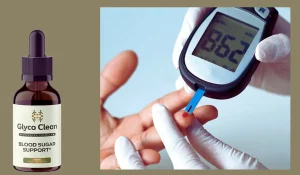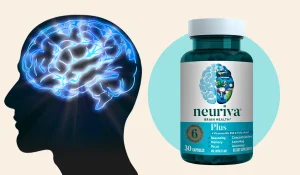Fungal nail infection, also known as onychomycosis, is a common nail infection seen among people. People, irrespective of age, can be affected by this problem. Nails that have a toenail fungus get thicker, separate, and discolored.
Laser therapy is a more recent and promising treatment option for nail fungus. This article discusses laser treatment for nail fungus and covers what to expect, risks, and other available treatments.
How Does Laser Treatment Work For Nail Fungus?

Using concentrated light, laser treatment kills the nail fungus and prevents its growth. Different types of laser treatments are available for treating toenail fungus; some of these treatments use light, while others use carbon dioxide (CO2).
Laser equipment releases thermal energy pulses. The laser is aimed at allowing heat to pass through the toenail and into the nail bed, the location of the fungus, to treat onychomycosis. For this treatment, yttrium-aluminum-garnet (YAG) or CO2 lasers with wavelengths of 870 nm, 930 nm, or 1320 nm are used.
Heat-induced gasification and breakdown of the diseased tissue destroy the fungus and the surrounding skin and nails. Additionally, the heat from the lasers sterilizes the area, assisting in the inhibition of fresh fungus development.
What should I expect?
Toenail fungus can usually be treated with laser therapy in one or two treatments. The actual laser operation is quick and easy; it usually takes half an hour to finish.
Preparation of laser treatment
In the initial consultation, the symptoms of the patient will be discussed. Sometimes the samples will be collected for further analysis. Later, the treatment will be administered by a dermatologist.
On or before the day of the treatment, the toenails might be clipped, and dead skin might be cleaned. Right before the treatment, sterile solutions will be used to clean the foot.
During the procedure of laser treatment
The dermatologist will pulse the laser using certain wavelengths after preparing the nails. This lessens the chance of adverse effects and helps limit heat on the skin. Slight discomfort or bleeding may be experienced while the tissues decompose. Unusual pain and discomfort should be communicated to the dermatologist.
Recovery of laser treatment
The patient can return as soon as the treatment is over. Any further sessions of treatment are usually scheduled two to six weeks apart. Even with successful treatments, an infected nail may not heal right away; you may need to wait up to 18 months for the nail to grow out before determining whether the therapy was successful.
Signs of Improvement
- The elimination of yellow, white, or brown discoloration on the affected toenail.
- Getting rid of flaky material under or around the nail
- Recovery of nail separation from the nail bed below.
- Regaining normal texture and form for newly growing nails, free of any thickness, lumps, or deformities
Safety of the treatment
The safety record of laser treatment for toenail fungus is high compared to other traditional treatments.
In contrast to conventional therapies for nail fungus, such as topical or oral antifungal drugs, lasers are not known to result in negative drug interactions, allergic reactions, or side effects. Laser treatment for toenail infection is considered a safe substitute for people with diabetes, liver or kidney illness, or poor drug tolerance.
Pros and cons of laser treatment for toenail infections
Pros
- Effectiveness: Unlike topical treatments that fail to reach the fungus underneath the nail, lasers target them and increase the success rate.
- Painless: In most cases, minimal to no pain is reported for laser treatments. In rare cases, some might feel a slight pain or a burning sensation.
- No damage to the nails: The health and structure of the nails are preserved by targeting the fungus alone.
- Low risk of infection: Post-treatment infections are rare for laser treatments.
- Immediate return to day-to-day life: Patients can return to normal life right after the procedures.
Cons
- Expensive: It is an expensive procedure, as insurance often does not cover it.
- Requires multiple sessions: Some patients might need multiple laser sessions, making it a long process.
- Not suitable for everyone: It is not suitable for some people with other health problems, such as peripheral neuropathy.
- Lack of long-term studies: There aren’t many long-term studies on the effectiveness or possible negative effects of laser treatments.
Alternate treatment options
Other treatment options, such as topical antifungal medications or oral antifungals, can be used to treat toenail fungus. Over-the-counter medications and prescriptions are the other available options.
Oral antifungals are not usually successful in treating toenail fungus and can have systemic, or whole-body, side effects. Although topical therapies are considered safe, they might not have a proper effect.
Studies have indicated that topical therapy can reduce toenail fungus by around 45%, while oral medication can reduce the condition by about 40% to 66%.
Also Read: How Do You Get Rid Of Nail Fungus Fast? Effective Methods Explained!
Conclusion
Laser treatments are considered one of the most effective treatments for toenail infections. Although they have low risks of side effects, some people might feel a slight pain or burning sensation during the process.
The results and improvements after the treatment will be seen only after a few weeks. Some people might also need multiple laser sessions to rectify the problem.
References
- Fungal nail infections. (2017).
https://www.cdc.gov/fungal/nail-infections.html - Ghannoum M,et al. (2014). Fungal nail infections (onychomycosis): A never-ending story? DOI:
https://dx.doi.org/10.1371%2Fjournal.ppat.1004105







